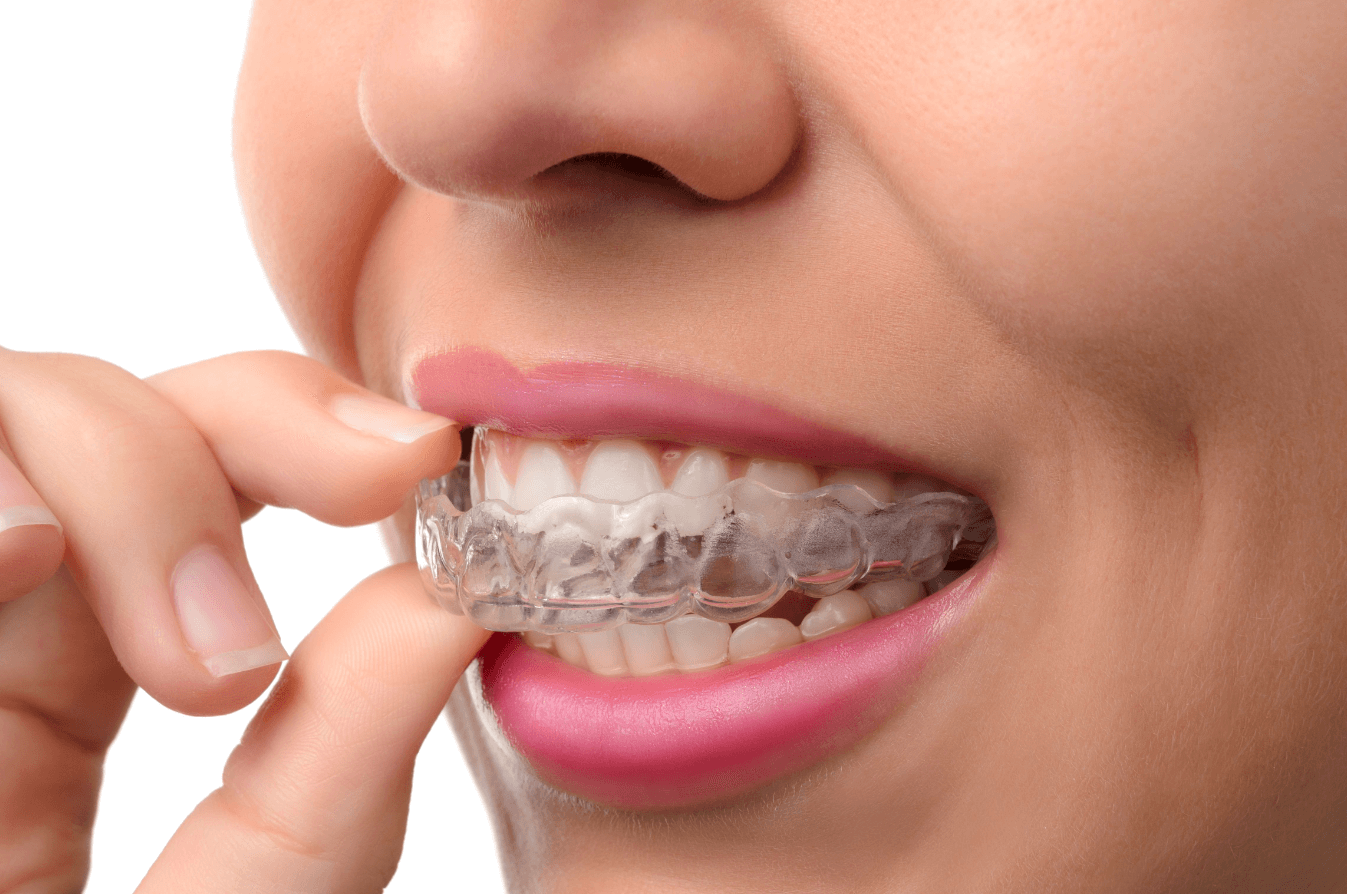In a world where appearances matter, having a confident smile can make a significant difference. One popular option for achieving that perfect smile is Invisalign, a discreet and effective orthodontic treatment. However, the pressing question for many is, “How much is Invisalign without insurance?”
I. Introduction
A. Brief Overview of Invisalign
Invisalign is a modern orthodontic treatment designed to straighten teeth without the use of traditional metal braces. Instead, it utilizes a series of clear, custom-made aligners to gradually shift teeth into their desired positions.
B. Importance of Dental Health
Before delving into the costs associated with Invisalign, it’s crucial to emphasize the significance of maintaining optimal dental health. Straightening teeth not only enhances aesthetics but also contributes to overall oral well-being.
II. Understanding Invisalign
A. What Is Invisalign?
Invisalign is a revolutionary approach to orthodontic treatment, offering a more discreet and comfortable alternative to traditional braces.
B. How Does Invisalign Work?
The treatment involves a series of progressively adjusted aligners, each worn for about two weeks. These aligners gently move the teeth into the desired positions, providing a customized and efficient solution.
III. Factors Influencing Invisalign Costs
A. Complexity of the Case
The degree of orthodontic correction required plays a significant role in determining the overall cost. More complex cases may require additional aligners and longer treatment times.
B. Geographic Location
Costs can vary based on the region or country, with urban areas generally having higher prices. Understanding the local market is crucial for obtaining accurate cost estimates.
C. Dentist’s Experience and Expertise
The skills and reputation of the treating dentist can impact the overall cost. Experienced and specialized orthodontists may charge higher fees for their services.
IV. Average Cost of Invisalign
A. National Average Cost
As of [current year], the national average cost of Invisalign treatment typically ranges from [X amount] to [Y amount]. This cost includes the entire treatment process, from initial consultations to the final retainers.
B. Regional Variations
Different regions may experience variations in cost due to factors such as living expenses, market demand, and competition among dental professionals.
V. Affordable Alternatives
A. Traditional Braces
For those seeking more budget-friendly options, traditional braces remain a reliable and effective choice. While not as inconspicuous as Invisalign, they offer a cost-effective solution for achieving straighter teeth.
B. Payment Plans and Financing Options
Many dental offices provide flexible payment plans or financing options, allowing patients to manage the cost of Invisalign over time. Exploring these alternatives can make the treatment more accessible.
VI. Insurance Coverage for Invisalign
A. General Overview of Dental Insurance
Understanding how dental insurance works is essential. Dental plans often cover preventive care but may have limitations when it comes to orthodontic treatments like Invisalign.
B. Invisalign Coverage Considerations
Some insurance plans may provide partial coverage for Invisalign, particularly if the treatment is deemed medically necessary. Checking with the insurance provider and understanding policy details is crucial.
VII. Out-of-Pocket Expenses
A. Additional Costs Associated with Invisalign
In addition to the treatment fee, there may be additional costs such as X-rays, scans, and follow-up appointments. Being aware of these expenses helps in budgeting effectively.
B. Tips for Budgeting
Planning for out-of-pocket expenses requires foresight. Budgeting for unexpected costs ensures that the overall financial burden remains manageable.
VIII. Seeking Professional Consultation
A. Importance of Dental Consultations
A consultation with an experienced orthodontist is invaluable. Professionals can assess the complexity of the case and provide accurate cost estimates based on individual needs.
B. Getting Personalized Cost Estimates
Requesting personalized cost estimates during consultations allows individuals to plan their finances accordingly. It also helps in understanding the scope of the treatment.
IX. Real Stories and Experiences
A. Patient Testimonials on Invisalign Costs
Real stories from individuals who have undergone Invisalign treatment provide insights into the financial aspects. Learning from their experiences can help prospective patients make informed decisions.
B. Lessons Learned from Their Journeys
Patients often share valuable lessons, including tips on managing costs and dealing with unexpected challenges during the Invisalign journey.
X. DIY Orthodontics and Risks
A. Online Aligner Options
The rise of online aligner services has introduced more affordable alternatives. However, the risks and limitations associated with DIY orthodontics should be carefully considered.
B. Potential Risks and Drawbacks
While online aligners may seem cost-effective, they lack the professional oversight crucial for safe and effective orthodontic treatment. Risks include misalignment, discomfort, and potential damage to teeth.
XI. Tips for Affording Invisalign
A. Flexible Spending Accounts (FSAs) and Health Savings Accounts (HSAs)
Taking advantage of tax-advantaged accounts like FSAs and HSAs can help offset Invisalign costs. These accounts allow individuals to use pre-tax dollars for eligible medical expenses.
B. Negotiating with Dentists
In some cases, dentists may be open to negotiation, especially if the patient is willing to pay upfront or in a lump sum. Clear communication about financial concerns can lead to mutually beneficial arrangements.
XII. Case-by-Case Scenarios
A. Different Cost Scenarios Based on Specific Cases
Examining various case scenarios provides a nuanced understanding of costs. Factors such as the severity of misalignment and treatment duration contribute to individualized pricing.
B. Variables Impacting Costs
Variables like additional treatments, refinement phases, and the need for replacement aligners can influence the overall cost. Anticipating these variables aids in better financial planning.
XIII. Invisalign vs. Other Orthodontic Options
A. Comparisons with Traditional Braces
A detailed comparison between Invisalign and traditional braces helps individuals weigh the pros and cons. Factors such as aesthetics, comfort, and treatment duration play significant roles in decision-making.
B. Pros and Cons of Each Option
Highlighting the advantages and disadvantages of both Invisalign and traditional braces empowers individuals to make informed choices based on their preferences and lifestyle.
XIV. Maintaining Oral Health During Treatment
A. Importance of Proper Dental Care
Regardless of the chosen orthodontic treatment, maintaining excellent oral hygiene is crucial. Regular brushing, flossing, and dental check-ups contribute to the success of the treatment.
B. Tips for Maintaining Oral Hygiene with Invisalign
While using Invisalign aligners, specific tips for caring for teeth ensure that the treatment process is smooth and the desired results are achieved. Read more…
XV. Conclusion
A. Summarizing Key Points
In conclusion, the cost of Invisalign without insurance is influenced by various factors. Understanding these factors, exploring alternatives, and seeking professional guidance are essential steps in making an informed decision about orthodontic treatment.
B. Encouraging Informed Decision-Making
Empowering individuals with knowledge allows them to navigate the financial aspects of Invisalign confidently. Making informed decisions ensures a positive and successful orthodontic experience.
Frequently Asked Questions (FAQs)
Q: Is Invisalign more expensive than traditional braces?
- A: Invisalign costs can vary but are generally comparable to traditional braces. The decision often depends on individual preferences and lifestyle.
Q: Does dental insurance cover Invisalign?
- A: Dental insurance may provide partial coverage for Invisalign, but it’s essential to check the policy details and consider out-of-pocket expenses.
Q: Are there any financing options available for Invisalign?
- A: Many dental offices offer payment plans and financing options to make Invisalign more accessible to patients.
Q: Can I negotiate the cost of Invisalign with my dentist?
- A: Some dentists may be open to negotiation, especially if patients are willing to pay upfront or in a lump sum.
Q: How do I maintain oral hygiene with Invisalign?
- A: Maintaining oral hygiene with Invisalign involves regular brushing, flossing, and cleaning the aligners as recommended by your dentist.










